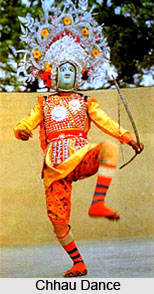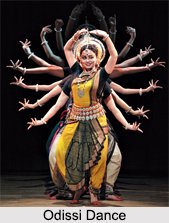 East Indian Dances comprise of an eye-catching combination of classical, folk and tribal dance forms that replicate the history of the region spanning over a time frame of hundred years. As a result of developing over several eras, the dances of eastern India have been catalysed by various factors.
East Indian Dances comprise of an eye-catching combination of classical, folk and tribal dance forms that replicate the history of the region spanning over a time frame of hundred years. As a result of developing over several eras, the dances of eastern India have been catalysed by various factors.East Indian Dances are the outcome of several religious inspirations, cultural expressions, as well as entertainment. Eastern India; coloured by the rainbow of cultural and linguistic characteristics; even thrives to be a standalone barricaded by the shadow lines of historical influences intermingled with the existing traditions of the land. Eastern India had been the historical centre of the Kalinga, Sunga and Pala empires, who had the monopoly of the political reigns to their kitty. The states also experienced the rule of Mughals and then the British empires that influenced the culture, music and tradition of eastern India a lot. Thus the major dances that emerged as the popular dance forms of the region include several folk and tribal dances along with classical dance forms.
Some of the East Indian Dances are as follows:
 Jhijhian: Jhijhian dance is a dance style, well-liked in Bihar. This is a ritualistic dance performed during no-rain time and aims at building the God of rain pleased. The dance is accompanied by a song which is full of prayers to Lord Indra, the rain God. The participants of the dance comprise a lead singer, harmonium player, a flute player, and a dholak player.
Jhijhian: Jhijhian dance is a dance style, well-liked in Bihar. This is a ritualistic dance performed during no-rain time and aims at building the God of rain pleased. The dance is accompanied by a song which is full of prayers to Lord Indra, the rain God. The participants of the dance comprise a lead singer, harmonium player, a flute player, and a dholak player.Paika: Another popular dance form of Bihar is Paika. The dance reminds us of infantry and its quickness, courage, and excitement. The dance is popular mainly in the Mayurbhanj region. A flat ground is essential for its performance. This dance displays the skills and the ability of the dancers to handle these weapons. The dance reaches its climax with the fast beats produced by ‘Mandal’. Performers wear colourful turbans and tight dhotis and stand in two rows. Holding the wooden swords and shields in their hands, warriors engage in a fierce mock combat.
The Santhal Dance: This dance is based on the folk dance of Madhya Pradesh. This is the dance that usually wraps the themes related to the matters of gender and land rights. Both men and women take part in the Santhal dance.
Phagua: This is a dance that is performed by the males in the time of Hindu festival Holi. Throughout their performance, the dancers throw coloured water and powder on each other. Women also join this Phagua dance in some of the parts of Jharkhand.
For more, check the link below:
https://www.indianetzone.com/40/east_indian_dances.htm
https://www.indianetzone.com/40/east_indian_dances.htm